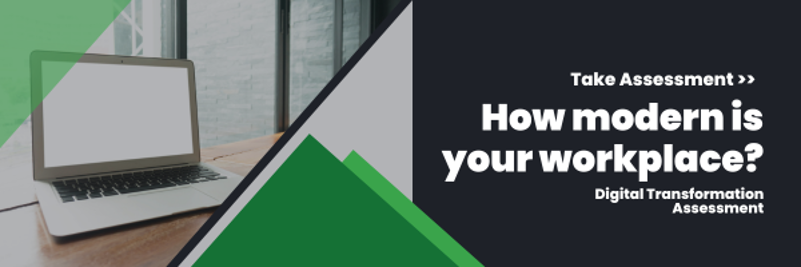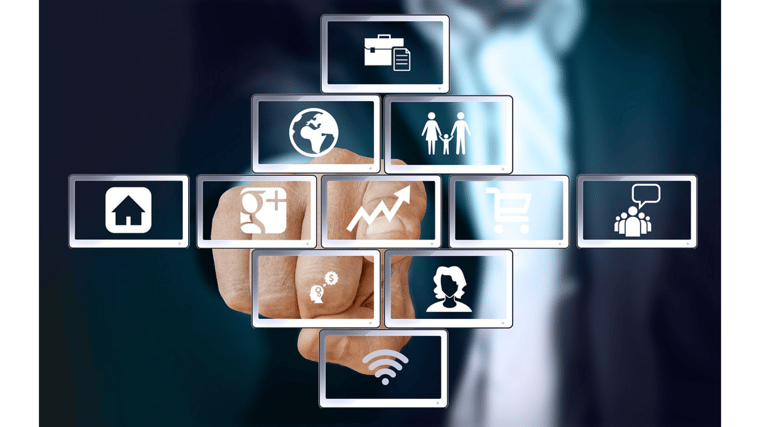In today’s rapidly evolving digital landscape, odds are that you’ve heard the term “Internet of Things” or IoT.
But what exactly is IoT? What makes it such a game-changer? And what does it hold for the future? Find out below.
Read: Is Your Workplace Modern?
What Is the Internet of Things?
The IoT is a concept that refers to the connected network of everyday physical objects and devices, or things, to the internet. This enables them to collect, exchange and transmit data without human intervention, giving it the potential to reshape how we live and work by letting machines do all the heavy lifting.
With these “smart” devices, the IoT bridges the gap between the digital world and our physical world. IoT devices aren’t limited to only computers and machines; any device with sensors, software, processors and other technologies that allow them to seamlessly communicate and interact with other devices and systems (and humans) are considered part of the IoT. IoT devices typically use machine learning to analyze the data and help make informed decisions.
The Three Key Components of the Internet of Things
- Devices: As mentioned above, IoT devices are equipped with sensors, processors and communication interfaces that collect data and then transfer it to the internet. IoT devices can include ordinary household objects, sophisticated industrial tools, self-driving cars, military-grade equipment and more. There are currently over 14.76 billion IoT devices.
- Connectivity: To facilitate communication and share the collected data, IoT devices rely on various connectivity options like Wi-Fi, Bluetooth, cellular networks, satellite connections and more.
- Data: IoT devices generate vast amounts of data, which can be sent to cloud servers or edge computing devices for storage and processing. This data is crucial for making informed decisions and taking action, and the cloud provides a scalable infrastructure for IoT applications. It also allows the data to be accessed from multiple devices in the network.
Internet of Things Applications in Different Industries
The IoT has made a significant impact across various industries, enhancing efficiency, safety and convenience, as well as productivity, decision making and customer experience. Some notable applications in these industries include:
- Smart homes: IoT enables homeowners to make their dwellings safe and efficient. They can control lights, thermostats, kitchen appliances, security systems, baby monitors and more. Monitor electricity usage, turn off unused devices, find misplaced objects and automate daily tasks with IoT devices. Smart speakers and TVs can also enhance entertainment in the home, while smartwatches can help text, call and more.
- Smart cities: IoT technologies can also improve cities; they can help manage traffic, reduce energy consumption, improve public safety, notify residents of outages and monitor infrastructure to ensure they’re safe. Smart meters and power grids can also help reduce outages.
- Transportation: IoT plays a crucial role in vehicle telematics, enabling real-time tracking and monitoring of fleets and supporting autonomous vehicles to improve efficiency and reduce costs. If vehicles are carrying products that need temperature monitoring, like food or pharmaceuticals, IoT can help, and it can detect vehicle issues before they happen so the driver can fix them. Supply chain management can track assets and determine the best shipping routes, too.
- Manufacturing: Industrial IoT (IIoT), or Industry 4.0, is revolutionizing manufacturing by enhancing predictive maintenance, increasing automation and improving overall operational efficiency with affordable, reliable sensors. It can also monitor products to identify and address quality defects and help improve worker safety.
Read: AI for Your Industry: The Manufacturing Sector
- Healthcare: Wearable devices can monitor vital signs, track physical activity and send this data to healthcare providers, leading to better patient care and early detection of health issues. Hospital staff can complete inventory more efficiently and speed up record keeping.
- Agriculture: IoT sensors and devices can help farmers optimize crop yields, monitor livestock and manage irrigation systems efficiently.
- Retail: IoT applications can help retailers manage inventory, improve customer experience, optimize supply chains and reduce costs.
Challenges and Concerns Regarding the Internet of Things
Although IoT has incredible potential, it does raise some challenges and concerns:
- Security: The more devices connected to the internet, the more potential entry points for cyber attacks and data loss. For example, baby monitors have notoriously been hacked into by cyber criminals.
- Privacy: The collection and storage of personal data by IoT devices can also raise privacy concerns, so robust protection measures are essential.
- Compatibility: As the IoT ecosystem grows, ensuring that devices from different manufacturers can work together can be tricky.
- Scalability: Handling the enormous amount of data generated by IoT devices requires a scalable infrastructure and efficient data management solutions. Managing all this data – and the IoT devices – is increasingly difficult.
The Future of the Internet of Things
The IoT is still in its infancy, but its future is filled with possibilities. We can expect the IoT to become an even more integral part of our interconnected world.
- 5G Connectivity: The rollout of 5G networks will significantly enhance the speed and reliability of IoT communications, enabling real-time applications and the proliferation of IoT devices.
- Edge Computing: Processing data closer to the source, or edge, rather than sending it to distant cloud services can reduce latency, improve decision making and minimize bandwidth consumption.
- Artificial Intelligence Integration: Combining IoT and AI can lead to more intelligent, autonomous systems that learn and adapt based on the data they collect.
- Sustainability: IoT can play a vital role in environmental monitoring and resource management, helping address resource conversation and environmental sustainability.

